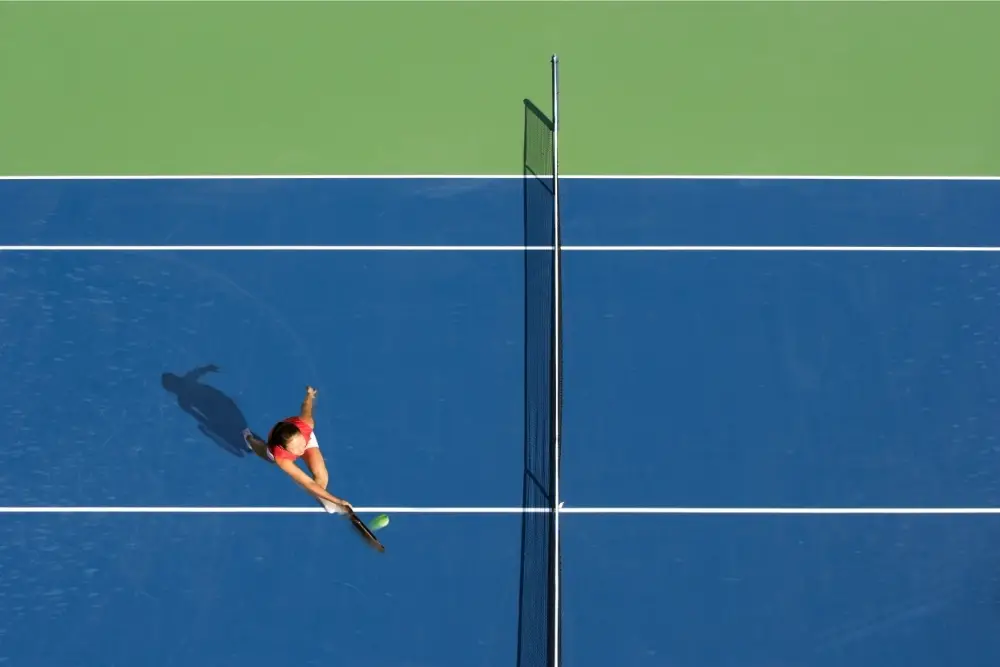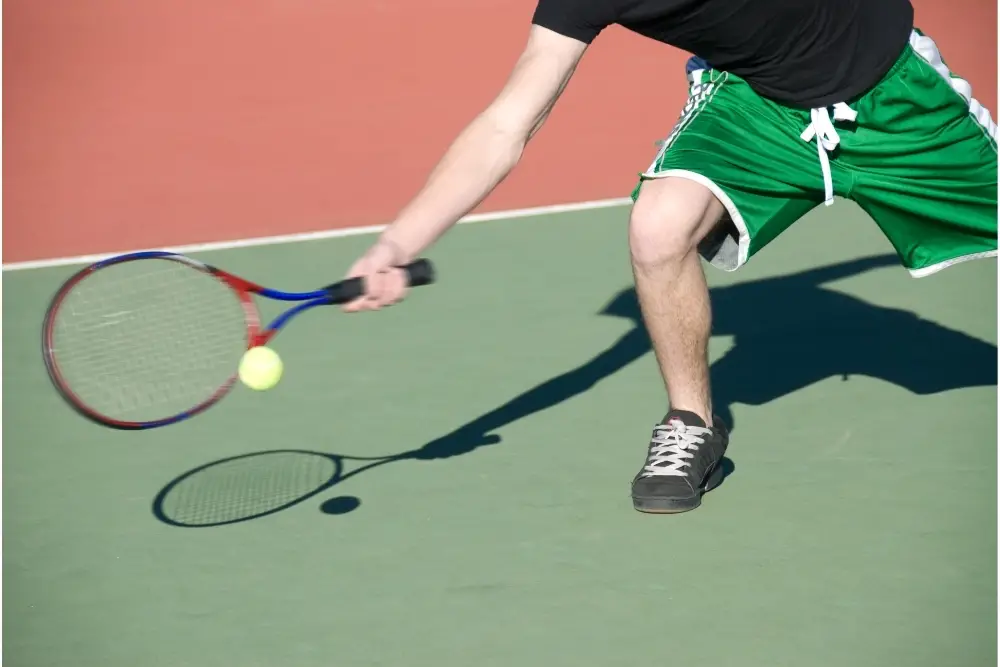Hey! This site is reader-supported and we earn commissions if you purchase products from retailers after clicking on a link from our site.
In tennis, a volley is a shot where the player returns the ball before it bounces. They are usually performed closer to the net, as their primary function is to disorientate your opponent by interrupting the timing of the rally.
A player will usually hit the ball quite aggressively, opting to use their dominant hand to perform forehand volleys.
However, half volleys differ slightly from the traditional “punch volley” technique. Now let’s see what is a half volley in tennis and when to use it?

During a half volley shot, a player will hit the ball immediately after it bounces off the ground. As you want to hit the ball before it reaches the apex of its bounce, it is also referred to as the “on the rise shot”, or “hop shot”.
Players will often use a half volley when they’re not quite quick enough to reach an opponent’s shot in the air to volley it.
It is known for being one of the harder shots to pull off during a tennis match, but it’s definitely a trick you want to have up your sleeve.
How To Hit A Half Volley
You want to approach a half volley quickly, so you can intercept the ball before it bounces too high.
- Get down low to the ball: The key here is to be close enough to the ball to hit it just after it has bounced.
- Keep your racket in front of your body: You don’t need a backswing to successfully hit a half volley. You’re not looking for power, instead your focus should be on accuracy and guiding the ball.
- When you finish the swing, keep your racket facing in the direction of where you’re hitting the ball: Follow the ball’s movement forward. The racket strings may be open a little bit, however, the idea is that you’re going to keep the strings in line with where you want to hit the ball.
Tips:
- You don’t want to raise your arm higher than your shoulder as you want to be as low to the ground as possible.
- You’re effectively guiding the ball, so the longer your stroke the further the ball will go into the court.
- A half volley is pretty similar to a forehand hit, so the recommended grip to use is the standard continental grip.
- Keep your eyes on the ball, as you need to time the shot perfectly in order to hit the ball in front of your body.
- A half volley backhand is just as tricky, but the technique is pretty much the same. Keep yourself low to the ball, and guide the ball forwards with your racket. For a backhand half volley you’ll also need to use the continental grip.
- Performing a half volley shot can actually be easier on clay courts, as the court’s surface reduces the speed of the ball making it easier to control.
The best way to practice a half volley is to get out on the court with a partner. Have your partner feed you the ball, and return the ball with a half volley.
Try aiming to hit the ball towards the corners or down the middle of the court, as these are the areas you’ll want to drive the volley.
For optimum practice, try rallying shots back and forth using only half volleys. This will help you practice getting the timing of the stroke correct.

When To Use A Half Volley
In an ideal world, you never want to hit a half volley, as players are often forced to hit a half volley shot by their opponent, or when they’re caught out of position.
If you can’t get to the ball fast enough to volley it out of the air, then it’s time to use a half volley shot. They’re usually performed either on the baseline or on the service line.
There’ll be a lot of times whilst you’re coming into the net off the serve that you’ll be forced to use a half volley shot.
As you’ll most likely be hitting the ball from under the net, it’s best to think about where you want to place the ball when half volleying. Aim to keep the ball in play so you can get to the net ready for your next shot.
Although a player never generally intends to use a half volley shot, they also make a pretty effective defensive shot.
If you have the half volley under your belt, don’t be afraid to use it to get yourself into a better attacking position whilst your opponent is preoccupied.
How To Counter A Half Volley
If you find yourself on the receiving end of a half volley, don’t panic! Chances are your opponent is trying to get themselves back towards the baseline.
If that’s the case, hitting a drop shot off a half volley is an especially effective technique to surprise your baseline-bound opponent. Your opponent will struggle to get back towards the net before the ball bounces a second time.
Professionals Who Mastered The Half Volley
Half volleys are notorious for being such a difficult shot to make that even professionals can lose their temper trying to get it right. However, those that can successfully half volley are some of the most dangerous players in the game.
The half volley first came into prominence in the early 1900s at the hands of British tennis professionals George Caridia and Ernest Lewis.
As the game evolved, so did the talents of the players. The greatest half-volleyer in history is American professional, John McEnroe.
Unlike any other player during his time, McEnroe mastered the half volley. He often hit the shots deep to the baseline, allowing him to move closer to the net and get himself into a better position.
In more recent years, former world number one Roger Federer has been one of the best half-volley hitters. The Swiss tennis player consistently executed strong half volleys.
He was also quite successful at delivering half volley winners, and even bested some of the fellow greats like Novak Djokovic.
Leave a Reply